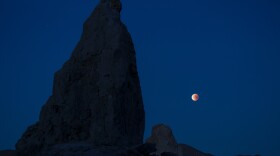The last time in the year to catch a supermoon, the biggest and brightest full moons, begins soon.
The astronomical event started Wednesday, but isn't expected to be visible to the naked eye until 9:36 p.m. EDT Thursday and will stay in that phase until Saturday morning, according to NASA.
It is the fourth and final supermoon of the year.
What is a supermoon?
A supermoon is a full moon that is within 90% of its closest point, or perigee, to Earth in its orbit. While closer, that perigee is still about 226,000 miles from Earth.
In general, supermoons appear 17% bigger and 30% brighter than when the moon is at its farthest point away from Earth, NASA says.
The supermoon starting Thursday was also called the Sturgeon Moon — named after a large fish — by the Algonquin Native American tribe, in what is currently the northeastern U.S. It is also known as the Green Corn Moon, according to NASA.
What to look for
Supermoons in general appear 17% bigger and 30% brighter than when the moon is at its farthest point away from Earth, according to NASA. Supermoons are slightly bigger and brighter than most full moons, too. Just because it's bigger and brighter doesn't necessarily mean you'll see it unaided, so binoculars may give you a better view.
And if you're looking for some photography tips to capture this event, NASA has you covered with these handy tips.
Copyright 2022 NPR. To see more, visit https://www.npr.org.






